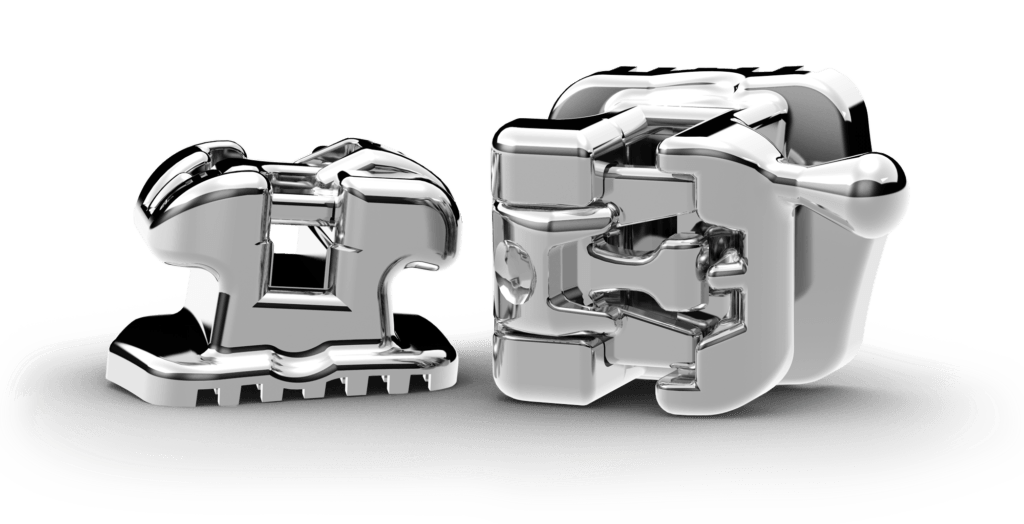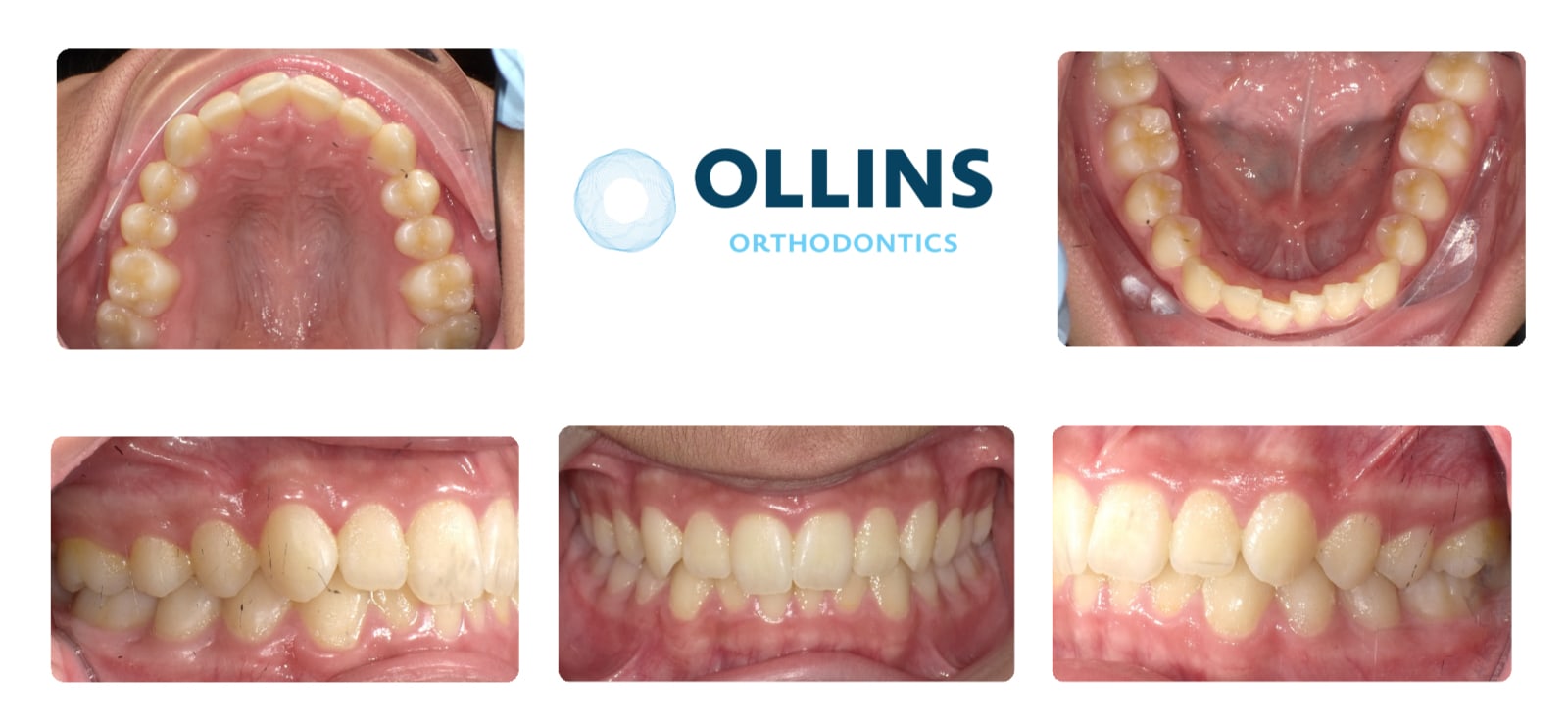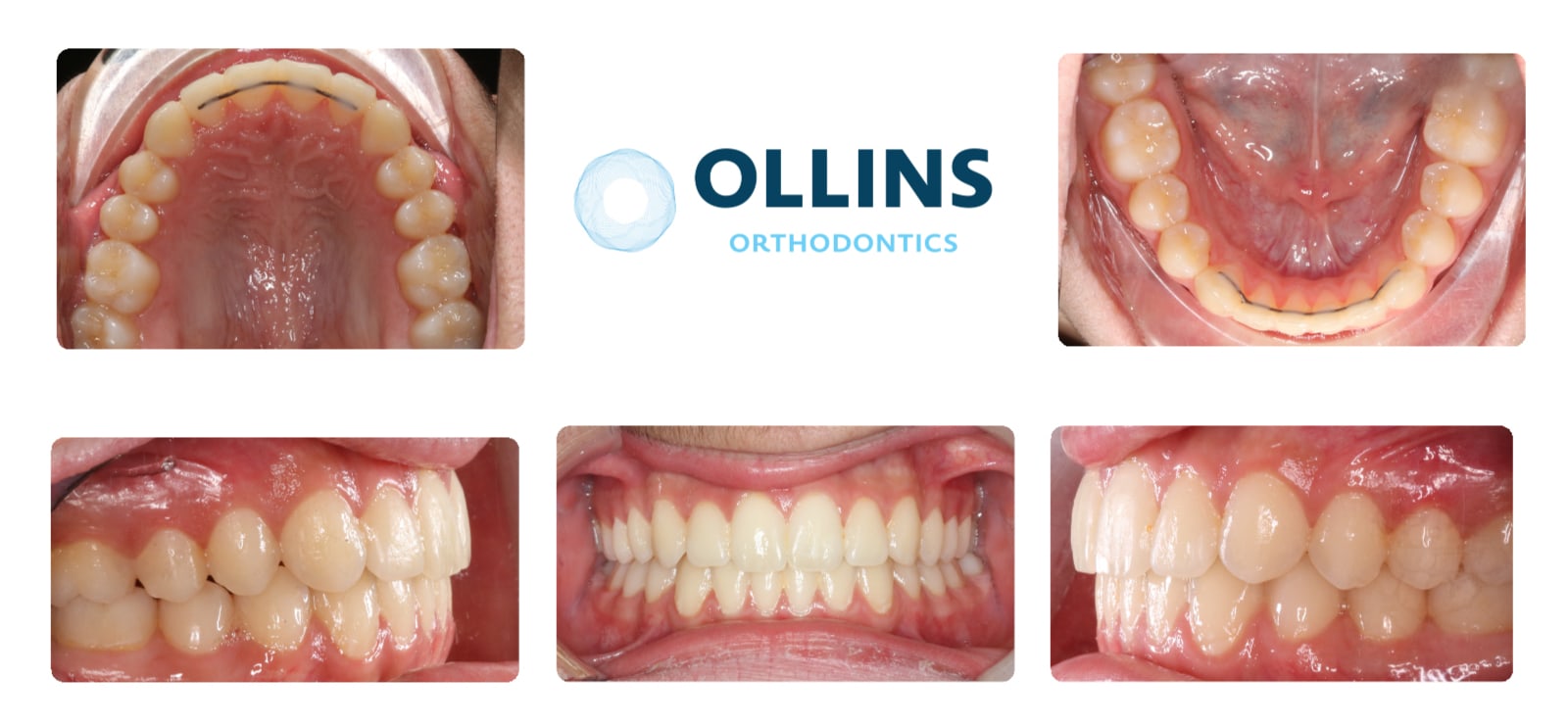Treatment With Pitts 21 Braces
The brackets and wires used in traditional metal braces are made of hypoallergenic stainless steel material. These brackets are very durable and long-lasting because they're created with a mix of stainless steel, nickel, and other metals.
Traditional braces have been around for a very long time, and are probably the most recognizable symbol of orthodontics. These orthodontic workhouses have a well-established history of successful treatment and are incredibly efficient at correcting oral issues ranging from mild to complex.
At Ollins Orthondtics, we use the Pitts 21 self-litigating braces system to give you a comfortable and efficient treatment.

A Real Ollins Orthodontics Patient With Pitts 21 Braces


What Makes Pitts 21 Different?
All metal braces may look the same, but it's what's under the hood that matters most. Pitts 21 changes how orthodontists think about treatment and what braces can do for your smile.
The first difference is that we don’t have to use color ties anymore to hold the wire to the brace. Even though the color ties may look nice at first, they tend to fade quickly and absorb plaque at a high rate.
By getting rid of the ties, your oral hygiene is greatly improved because of one less thing trapping plaque in your mouth.
The inside of the brace is square instead of rectangular. That may not mean much to you, but it gives control to Drs. Ollins to quickly move your teeth more efficiently. This could mean less treatment time in braces.
Even though we value your treatment's results versus how long you're in treatment, we've noticed treatment times have been decreasing.

How Braces Work
Before applying the brackets, your doctor and our team will collect photos and X-rays of your mouth. Sometimes we'll use our iTero scanner to scan each of your teeth and the layout of your gums and mouth. If necessary, this process takes 10-15 minutes and provides an extremely accurate 3D view of your mouth.
Once the records and optional scan are complete, the data will be used to help formulate a customized treatment plan, including how each tooth needs to be moved in order to get it in the best possible position. your doctor will then decide how to place the brackets based on this information.
For example, if you have some teeth that need to be tilted, the positioning of those brackets will be different than the positioning of brackets for teeth that need to be turned.
Once the brackets have been attached, the wire will be inserted. Bends in the wire are used to provide different types of pressure on different teeth. A bend in the wire is how most orthodontists encourage specific and precise movements.
This process is only able to occur if constant pressure is put on the tooth. As bone is absorbed on one side and then deposited on the other side, the tooth can move. Once the pressure stops - like when we remove your braces - the tooth will begin to settle into its new position.
Most teeth will start to drift back to their old positions over time. This is why patients are given retainers. When worn as directed, a retainer will help keep teeth in their new, improved positions and prevent this natural drifting.
Treatment Length
Every mouth is different, and every patient responds to treatment in their own way, so treatment time with metal braces will vary on a case-by-case. The average time spent in metal braces tends to be around 18 to 22 months but could be shorter or longer, depending on the individual.